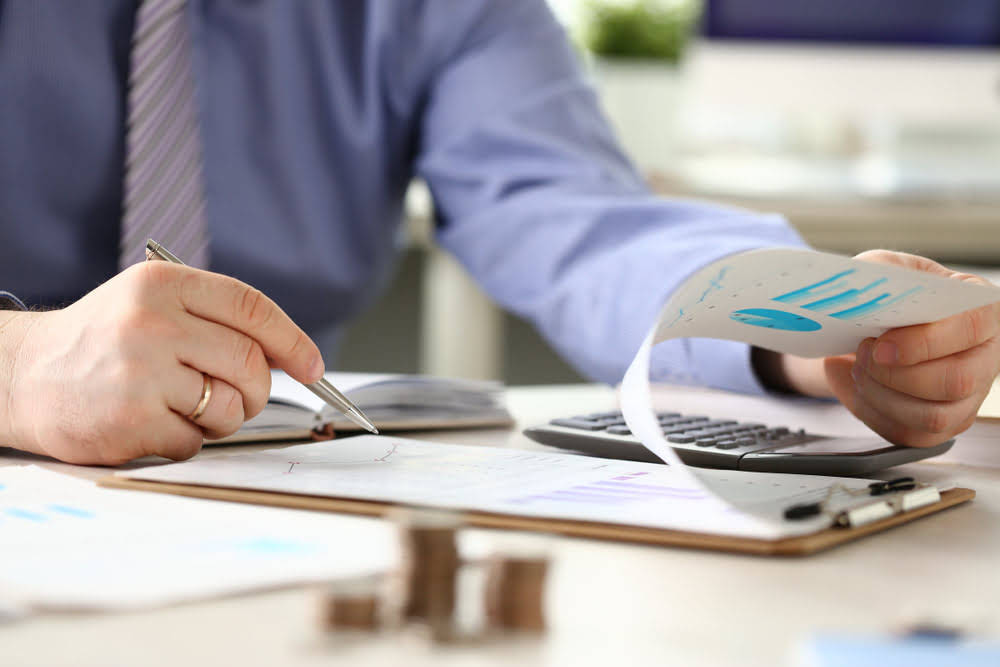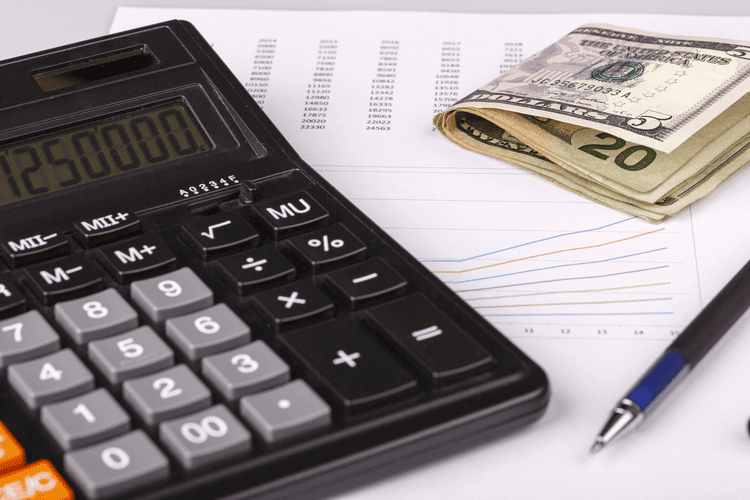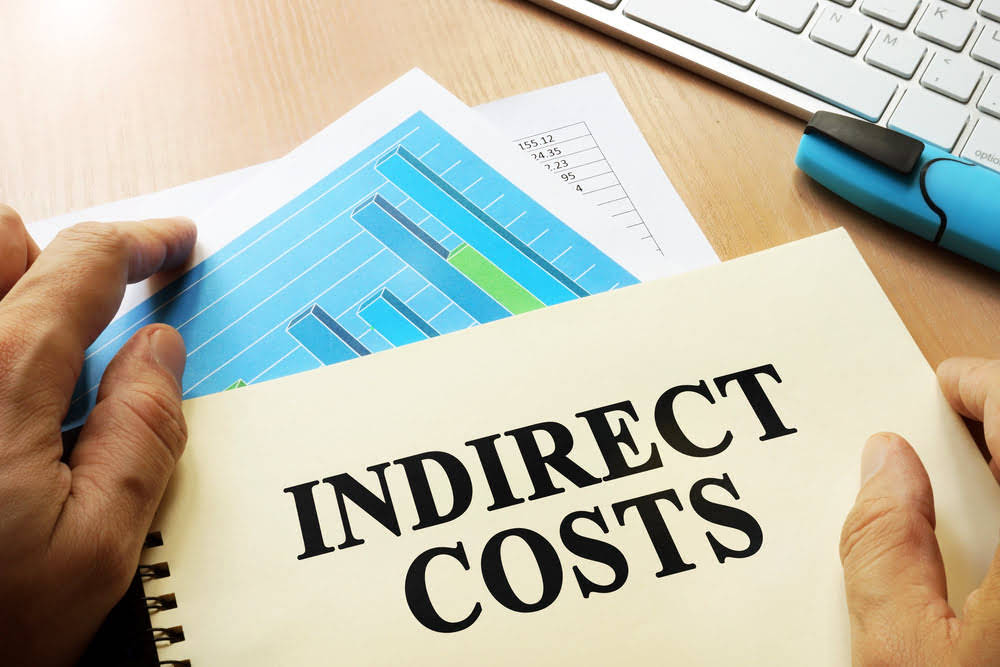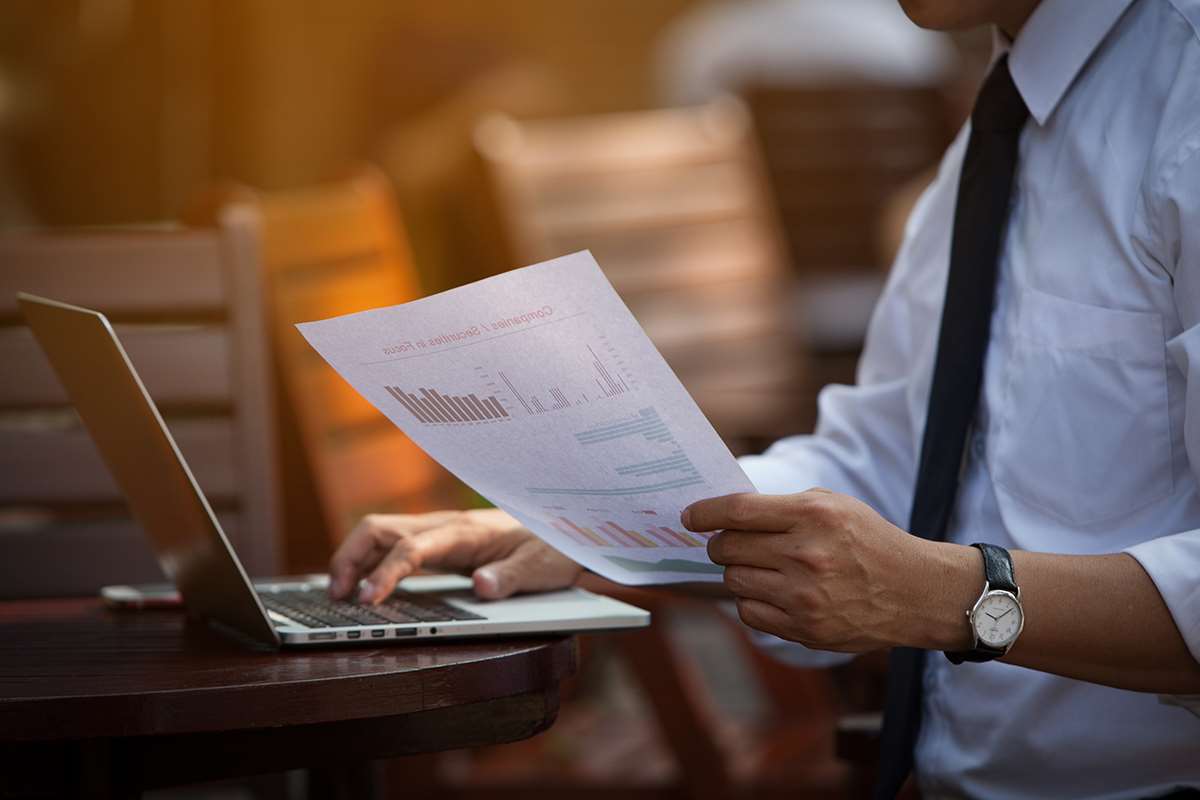Content

Inventory management allows businesses to minimize inventory costs as they create or receive goods on an as-needed basis. The accounting cycle is defined as a series of nine steps to collect, process, and report financial transactions. Learn the role of each of these steps and discover examples of this process. Using these insights you can improve warehousing and logistics productivity, which in turn reduces costs and transit time, avoids stockouts, and helps you to consistently meet customer expectations. To arrive at the value of merchandise inventory, multiply the amount of unsold inventory with the cost of each unit.
It includes items that are not the basic raw material to be processed but are necessary to manufacture a product. Examples of such items include nails, glue, cleaning materials, packaging materials, lubrication, machine oils etc.
- The inventory of such items on hand at the end of a period is also presented on the balance sheet.
- The total cost incurred to complete these unsold goods are reported as finished goods inventory along with raw materials and work-in-process inventory in the current assets section of the balance sheet.
- For this reason, a company’s “working capital”is known as the “current ratio”which divides current assets by current liabilities.
- When formatted with current as well as long-term classifications such as these, it can give users considerably more value than a regular balance sheet.
- Goods in transit should be included in the inventory of the company that has legal title to the goods.
Margo is the owner of a small retail business that sells gifts and home decorating accessories. Her business is well established, and she is now considering taking over additional retail space to expand her business to include gourmet foods and gift baskets. Based on customer feedback, she is confident that there is a demand for these items, but she is unsure how large that demand really is. Expanding her business this way will require that she incur not only new costs but also increases in existing costs. Some costs, such as raw materials, are unique to a particular type of business.
There is no way to tell from the general ledger accounts the cost of the current inventory or the cost of goods sold. Is that merchandise is commodities offered for sale while inventory is the stock of an item on hand at a particular location or business. When you sell that inventory THEN it becomes an expense through the Cost of Goods Sold account. Cost of goods sold is defined as the direct costs attributable to the production of the goods sold in a company. Many producers partner with retailers to consign their inventory.Consignmentinventory is the inventory owned by the supplier/producer but held by a customer . The customer then purchases the inventory once it has been sold to the end customer or once they consume it (e.g., to produce their own products). Weighted average method, which requires valuing both inventory and the COGS based on the average cost of all materials bought during the period.
Want To See This Answer And More?
Keep in mind a portion of these long-term notes will be due in the next 12 months. The details given above are fundamental classification of inventory. Free Financial Modeling Guide A Complete Guide to Financial Modeling This resource is designed to be the best free guide to financial modeling!
Form 10-Q JOANN Inc. For: Oct 30 – StreetInsider.com
Form 10-Q JOANN Inc. For: Oct 30.
Posted: Fri, 03 Dec 2021 13:24:43 GMT [source]
The term inventory refers to the raw materials used in production as well as the goods produced that are available for sale. There are three types of inventory, including raw materials, work-in-progress, and finished goods. When merchandise inventory is purchased with the intention to sell, it is always considered a current asset.
Any portion of the loan that’s due more than 12 months away is a long-term liability or asset. The way to recognize an inventory loss is through the lower of cost or market method, known as LCM. Under this method, you reduce the value of inventory that sells for less than its cost. The new value can be no higher than the inventory’s net realizable value, which is the price it will fetch minus any additional costs to prepare and sell it. The lowest new value can’t be less than the net realizable value minus your normal profit margin.
Certification program, designed to transform anyone into a world-class financial analyst. Compute depreciation expense using straight-line method of depreciation. Similar to cash equivalents, these are investments in securities that will provide a cash return within a single year. Cash equivalents are any type of liquid securities that are not in the form of cash currently, but that will be in the form of cash within a year.
Where Is Merchandise Inventory In The Balance Sheet?
The amount appearing in the general ledger Inventory account is not updated when purchases of merchandise are made from suppliers or when goods are sold. Raw materials are commodities companies use in the primary production or manufacturing of goods. Methods to value the inventory include last-in, first-out ; first-in, first-out ; and the weighted average method. For instance, a company runs the risk of market share erosion and losing profit from potential sales. Possessing a high amount of inventory for a long time is usually not a good idea for a business.

Obtain the total valuation of beginning inventory, ending inventory, and the cost of goods sold. First-in, first-out is a valuation method in which the assets produced or acquired first are sold, used, or disposed of first. Merchandise is received in unsatisfactory condition for a variety of reasons.
The benefit to the supplier is that their product is promoted by the customer and readily accessible to end users. The benefit to the customer is that they do not expendcapitaluntil it becomes profitable to them. This means they only purchase it when the end user purchases it from them or until they consume the inventory for their operations. Relevant costs include classified balance sheet differential, avoidable, and opportunity costs. Closing entries are an important component of the accounting cycle in which balances from temporary accounts are transferred to permanent accounts. Learn about the process, purpose, major steps, and overall objectives of closing entries. This lesson introduces you to the sales returns and allowances account.
Short Questions
That’s because of the challenges it presents, including storage costs, spoilage costs, and the threat of obsolescence. David Kindness is a Certified Public Accountant and an expert in the fields of financial accounting, corporate and individual tax planning and preparation, and investing and retirement planning.
UNAUDITED INTERIM CONDENSED CONSOLIDATED Financial Statements 6 – Form 6-K – Marketscreener.com
UNAUDITED INTERIM CONDENSED CONSOLIDATED Financial Statements 6 – Form 6-K.
Posted: Fri, 12 Nov 2021 08:00:00 GMT [source]
Under perpetual inventory system, changes in merchandise inventory account are recorded after each transaction. Securities and Exchange Commission in 1999, any item representing five percent or more of a business’s total assets should be deemed material and listed separately on its balance sheet. So, in the case of supplies, if the value of the supplies is significant enough to total at least five percent of your total assets, you should report it as a current asset on your balance sheet. Company management, analysts, and investors can use a company’s inventory turnover to determine how many times it sells its products over a certain period of time. Inventory turnover can indicate whether a company has too much or too little inventory on hand.
Classified Balance Sheet Defined With Examples
In accounting, inventory is considered a current asset because a company typically plans to sell the finished products within a year. Inventory cost includes the price a company pays to buy, store, and maintain items. Explore the definition, methods, and types of inventory cost, and learn about ordering, carrying, shortage costs, and the acronym COGS. The revenue and expenses for a law firm illustrate how the income statement for a service firm differs from that of a merchandising or manufacturing firm. Large service organizations such as airlines, insurance companies, and hospitals incur a variety of costs in the provision of their services.
What is the merchandise inventory?
Merchandise inventory is goods that have been acquired by a distributor, wholesaler, or retailer from suppliers, with the intent of selling the goods to third parties. This can be the single largest asset on the balance sheet of some types of businesses.
Inventory turnover ratio is computed by dividing cost of goods sold by average inventory. The lower of cost or market basis may be applied to individual items of inventory, major categories of inventory, or total inventory. Determining ending inventory can be complicated if the units on hand for a specific item of inventory have been purchased at different prices. In a merchandising company, inventory consists of many different items.
List Of Current Assets
Explain the lower of cost or market basis of accounting for inventories. Multiply your ending inventory balance with the production cost of each item. A sale of goods will result in a journal entry to record the amount of the sale and the cash or accounts receivable.

The immediate effect of writing down inventory under LCM is to reduce the value of ending inventory. There is a general ledger account Cost of Goods Sold that is debited at the time of each sale for the cost of the merchandise that was sold. This method calculates an average per unit cost and applies it to both the units in inventory and to the units sold. A work-in-progress is a partially finished good awaiting completion and includes such costs as overhead, labor, and raw materials.
What Are Noncurrent Assets?
The units that remain incomplete at the end of a period are known as work-in-process inventory. These units need the addition of more materials, labor or manufacturing overhead to be completed int the coming period. Like raw materials, work-in-process inventory is reported in the current assets section of the balance sheet. It is time consuming and costly for companies to physically count the items in inventory, determine their unit costs, and calculate the total cost in inventory. There may also be times when it is necessary to determine the cost of inventory that was destroyed by fire or stolen.
- Nearly any business that maintainsinventory on hand will have to write off a portion of it at some point.
- This will be done with simple, easy-to-understand, instructive examples involving a hypothetical retailer Corner Bookstore.
- Though both are considered assets, the employee computers are labeled as a “fixed asset” and accounted for separate from inventory when looking at a company’s balance sheet.
- Inventory management allows businesses to minimize inventory costs as they create or receive goods on an as-needed basis.
- When a business sells inventory at a faster rate than its competitors, it incurs lower holding costs and decreased opportunity costs.
- In an inflationary period, LIFO will generate higher Cost of Goods Sold than the FIFO method.
To meet these problems, accountants often use the gross profit method for estimating the cost of a company’s ending inventory. When you purchase items for inventory, the transaction will affect your balance sheet, the financial statement that provides a snapshot of your company’s worth based on its assets and liabilities. At this point, you have not affected your profit and loss or income statement. As noted above, inventory is classified as a current asset on a company’s balance sheet, and it serves as a buffer between manufacturing and order fulfillment. When an inventory item is sold, its carrying cost transfers to the cost of goods sold category on the income statement. Merchandise inventory is a current asset with a normal debit balance meaning a debit will increase and a credit will decrease. To determine the cost of goods sold in any accounting period, management needs inventory information.
Unlike merchandising firms, manufacturing firms must calculate their cost of goods sold based on how much they manufacture and how much it costs them to manufacture those goods. This requires manufacturing firms to prepare an additional statement before they can prepare their income statement. This additional statement is the Cost of Goods Manufactured statement. Once the cost of goods manufactured is calculated, the cost is then incorporated into the manufacturing firm’s income statement to calculate its cost of goods sold. The average inventory balance between two periods is needed to find the turnover ratio, as well as for determining the average number of days required for inventory turnover. A list of the current assets a company owns will be available on the balance sheet.
Knowing the basic characteristics of each cost category is important to understanding how businesses measure, classify, and control costs. We are a non-profit group that run this service to share documents. Financial modeling is performed in Excel to forecast a company’s financial performance. Overview of what is financial modeling, how & why to build a model. Identify the effect of an accrual adjustment on the financial statement. This will include the amount of principal that must be repaid within this time frame.
- As noted above, inventory is classified as a current asset on a company’s balance sheet, and it serves as a buffer between manufacturing and order fulfillment.
- Based on customer feedback, she is confident that there is a demand for these items, but she is unsure how large that demand really is.
- Typically these will be broadly categorized by type, such as short-term investments, inventory, and cash and cash equivalents.
- A service entity provides a service such as accounting or legal services or cable television and internet connections.
- Computerization makes it economical for many retail stores to use perpetual inventory procedure even for goods of low unit value, such as groceries.
- Taking a physical inventory involves actually counting, weighing, or measuring each kind of inventory on hand.
Accounting, or the preparation of financial statements , provides the mechanism for business owners such as Ted to make fundamentally sound business decisions. The conceptual explanation for this is that raw materials, work-in-progress, and finished goods are turned into revenue. The cost of goods flows to the income statement via the Cost of Goods Sold account.
Long-term assets will generally be depreciated over a period of time, and to account for this, they will be reported with the original cost and then the corresponding accumulated depreciation. Here is an example of a typical classified balance sheet, and as you are able to see, it contains all of the basic components in the basic accounting equation but divides them into several useful categories. Depending on the industry of the company in question, a current asset could be anything from crude oil to foreign currency.

Balance Sheet provides information about financial position of a company. We now offer 10 Certificates of Achievement for Introductory Accounting and Bookkeeping. Add the cost of goods sold to the difference between the ending and beginning inventories. Investopedia requires writers to use primary sources to support their work. These include white papers, government data, original reporting, and interviews with industry experts.
Is merchandise inventory classified with investments on the balance sheet?
Merchandise inventory is reported on the balance sheet as a current asset. Merchandise inventory refers to products a company owns and intends to sell.
Supplies can be considered a current asset if their dollar value is significant. If the cost is significant, small businesses can record the amount of unused supplies on their balance sheet in the asset account under Supplies. The business would then record the supplies used during the accounting period on the income statement as Supplies Expense. Merchandise inventory is the account on a balance sheet that reflects the total amount paid for products that are yet to be sold. As a current asset, merchandise inventory is basically a holding account for inventory that’s waiting to be sold.

